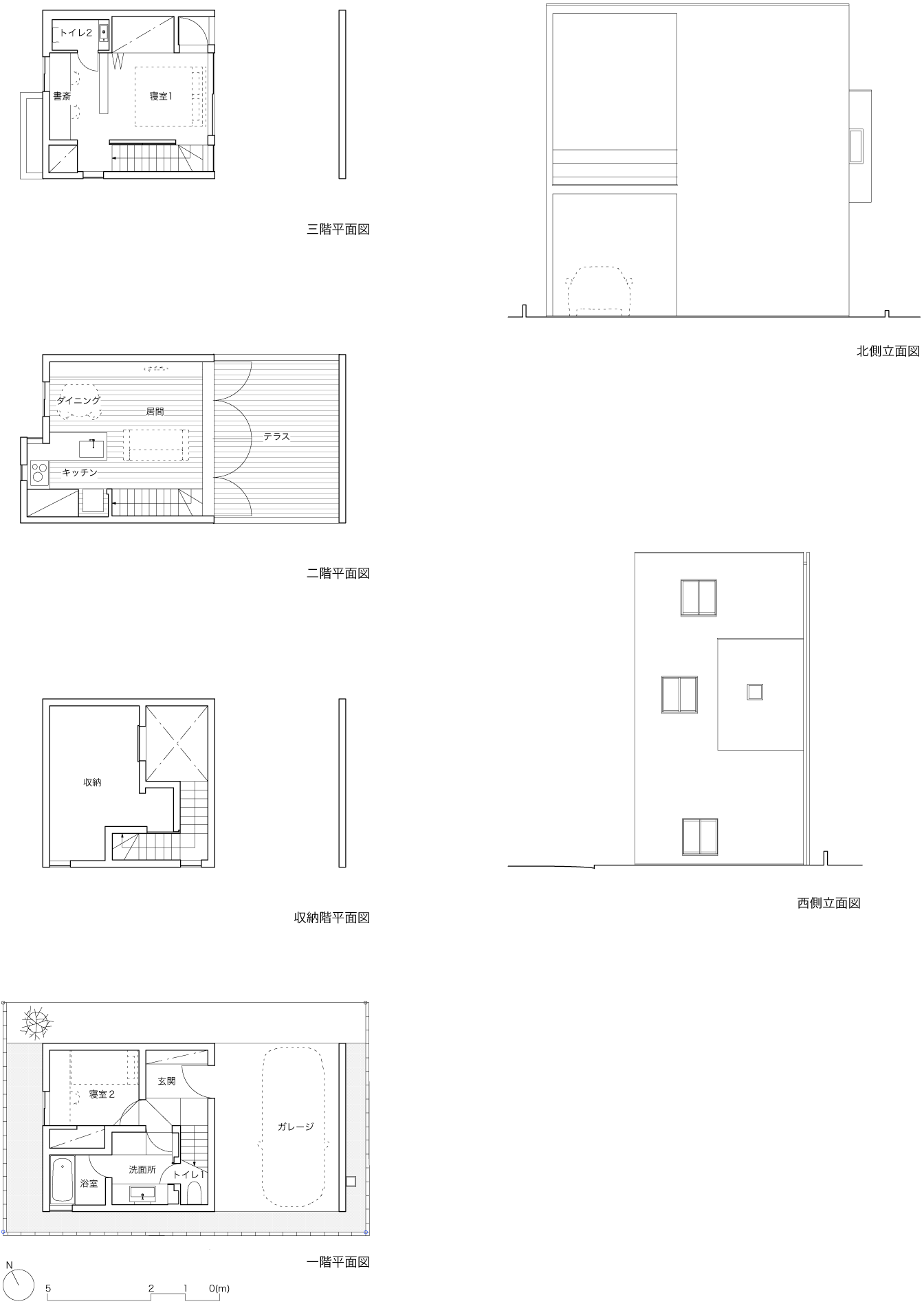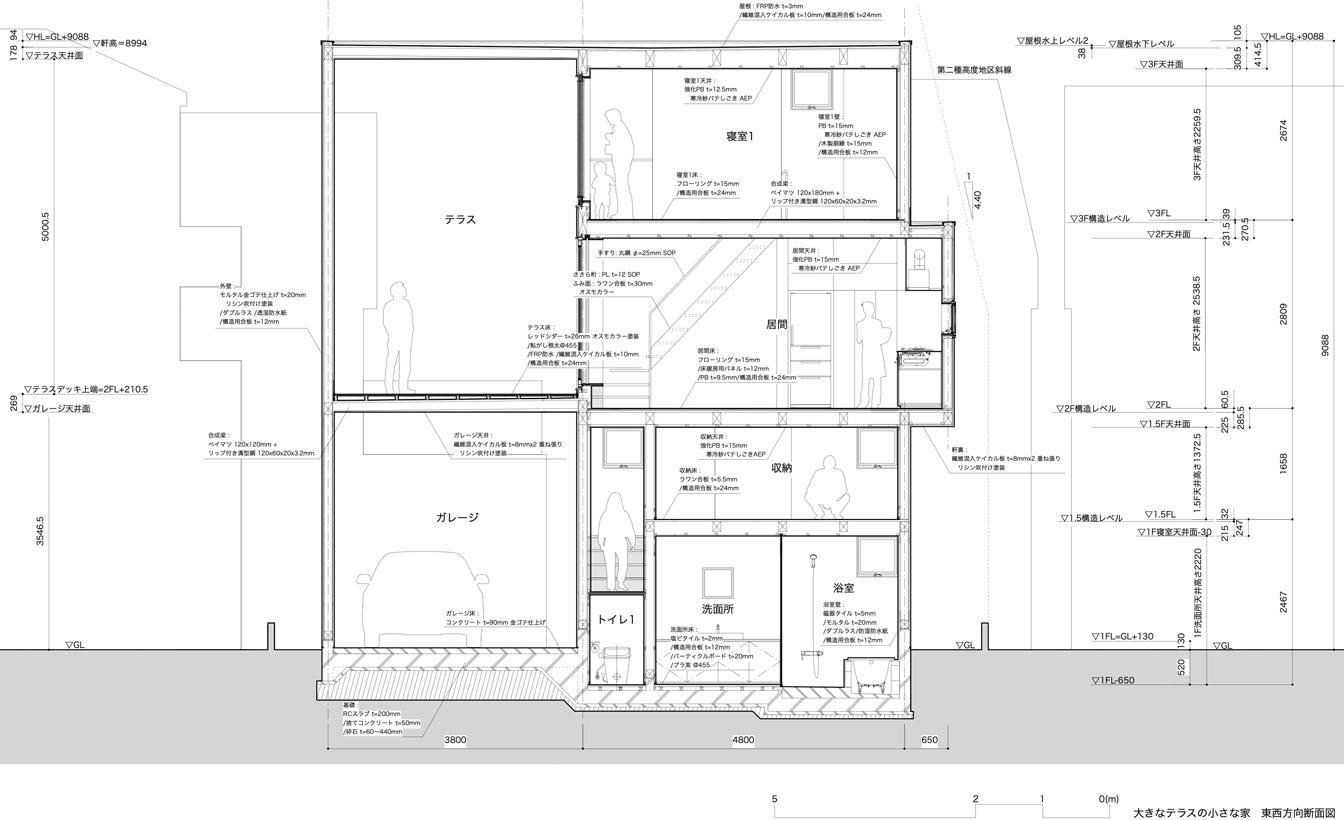Little House with a Big Terrace
Little House with a Big Terrace is a single-detached dwelling in a newly developed residential area of Tokyo. The site has northern exposure surrounded by three-story houses, and the conditions for the house may not be ideal in terms of the amount of sunlight, although our client requested a terrace with good natural light to do yoga. To meet this requirement, we decided to secure an outdoor space with sufficient exposure to light by first arranging a terrace on the second floor of the eastern half of the site, which was the only location with daylight because of the break in the row of houses there. We intended to ensure good ventilation and achieve a feeling of spaciousness by extending the terrace in the north-south direction and then block the neighbors’ view from the window with a wall built in the east-west direction.
By roofing the terrace and using terrace windows to provide access to the living room and bedroom, our clients can use the terrace as a convenient buffer to obtain daylight and ventilation for the indoor spaces, as well as to enjoy the outdoor space. The larger the space, the greater the exposure of the terrace to the blue sky and daylight. However, if more space is allocated for the terrace, then less floor space is available for the rooms because of the limited building area.
In order to compensate for the smaller indoor space, we added a low-ceilinged floor between the first and second floors to secure as large a living area as possible by reducing the storage space for the living room and bedroom. A storage floor is not included in the legal number of stories when the height of the ceiling is 1.4 meters or less. Therefore, the floor area of the building could be virtually increased without exceeding the legal limits of three-story housing. The addition of the storage floor caused the second level to be raised by half a floor, which further improved daylight exposure for the terrace and the living room and created a state where the building was less likely to be viewed directly from the outside and less susceptible to interference by the vertical difference from the windows of neighbors.





























